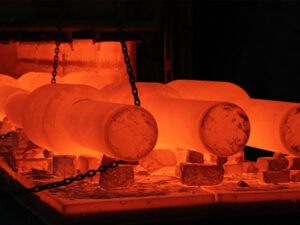Introduction
In the world of industrial manufacturing, the choice of materials can significantly impact the quality and performance of the final product. Two commonly used materials in the manufacturing and tooling industries are hot work tool steel and P20 steel. These materials have distinct properties and applications that make them suitable for various purposes. In this comprehensive guide, we will compare hot work tool steel to P20 steel, exploring their differences, similarities, and the best scenarios for each. Whether you are a manufacturer, engineer, or simply curious about these materials, this article will provide valuable insights into their characteristics and uses.
Understanding Hot Work Tool Steel<a name=”understanding-hot-work-tool-steel”
Hot work tool steel is a class of materials celebrated for their exceptional heat resistance, toughness, and wear resistance. These properties make them ideal for various industrial applications, including die casting, forging, and extrusion.
Exploring P20 Steel<a name=”exploring-p20-steel”
P20 steel, on the other hand, is a versatile and widely used plastic mold steel known for its excellent machinability and weldability. It is commonly used in injection molding and extrusion processes.
Comparing Hot Work Tool Steel and P20 Steel<a name=”comparing-hot-work-tool-steel-and-p20-steel”
Material Composition<a name=”material-composition”
Hot work tool steel is a high-alloy steel that includes elements like chromium, molybdenum, and vanadium, which contribute to its exceptional heat resistance and wear resistance.
P20 steel is a low-alloy steel with a composition that includes carbon, manganese, chromium, and nickel. It is designed to be easy to machine and highly polishable.
Heat Resistance<a name=”heat-resistance”
Hot work tool steel exhibits superior heat resistance, making it suitable for applications where materials need to withstand high temperatures without losing their mechanical properties.
P20 steel has good heat resistance but is not as heat-resistant as hot work tool steel. It is better suited for applications where moderate temperatures are involved.
Wear Resistance<a name=”wear-resistance”
Hot work tool steel excels in wear resistance, making it ideal for applications where components are subjected to friction, abrasion, and wear over time.
P20 steel also offers good wear resistance but may not perform as well as hot work tool steel in extremely abrasive conditions.
Toughness and Durability<a name=”toughness-and-durability”
Hot work tool steel is known for its toughness and durability, allowing it to withstand high mechanical stress and loads, which is crucial in applications like forging and die casting.
P20 steel is tough and durable but may have limitations in highly demanding applications due to its lower alloy content.
Applications of Hot Work Tool Steel and P20 Steel name=”applications-of-hot-work-tool-steel-and-p20-steel”
Hot Work Tool Steel Applications<a name=”hot-work-tool-steel-applications”
Hot work tool steel finds applications in industries such as die casting, forging, extrusion, and plastic molding, where high temperatures and wear resistance are critical.
P20 Steel Applications<a name=”p20-steel-applications”
P20 steel is commonly used in plastic molding processes, including injection molding and extrusion, where excellent machinability and polishability are required.
Choosing the Right Material<a name=”choosing-the-right-material”
Considerations for Hot Work Tool Steel<a name=”considerations-for-hot-work-tool-steel”
When selecting hot work tool steel, consider its exceptional heat and wear resistance, making it suitable for high-temperature applications and abrasive environments.
Considerations for P20 Steel<a name=”considerations-for-p20-steel”
P20 steel is a solid choice when excellent machinability and polishability are needed in plastic molding applications. It may not be suitable for high-temperature or highly abrasive environments.
Pros and Cons<a name=”pros-and-cons”
Advantages of Hot Work Tool Steel<a name=”advantages-of-hot-work-tool-steel”
- Exceptional heat resistance
- Outstanding wear resistance
- High toughness and durability
Advantages of P20 Steel<a name=”advantages-of-p20-steel”
- Excellent machinability
- Good weldability
- High polishability
Disadvantages of Each Material<a name=”disadvantages-of-each-material”
- Hot Work Tool Steel: May be over-engineered for some applications, higher cost.
- P20 Steel: Limited heat resistance and wear resistance, not suitable for all applications.
FAQ<a name=”faq”
1. Can hot work tool steel be used for plastic molding?
Yes, hot work tool steel can be used for plastic molding, but it is often chosen for applications with higher heat and wear requirements.
2. Is P20 steel suitable for forging or die casting applications?
P20 steel is not typically used for forging or die casting due to its lower heat and wear resistance compared to hot work tool steel.
3. Which material is more cost-effective, hot work tool steel, or P20 steel?
P20 steel is generally more cost-effective than hot work tool steel, but the choice depends on the specific application requirements.
4. Can hot work tool steel be machined easily?
Machining hot work tool steel can be challenging due to its hardness. Specialized machining techniques and tools may be required.
Conclusion<a name=”conclusion”
Hot work tool steel and P20 steel are both valuable materials in the manufacturing and tooling industries, each with its own set of advantages and ideal applications. Hot work tool steel excels in high-temperature and abrasive environments, making it suitable for applications like die casting and forging. On the other hand, P20 steel is preferred in plastic molding processes where machinability and polishability are crucial. The choice between these materials ultimately depends on the specific needs and conditions of the application at hand. Understanding their properties and characteristics is essential for making an informed decision and achieving the desired results in manufacturing and tooling operations.

